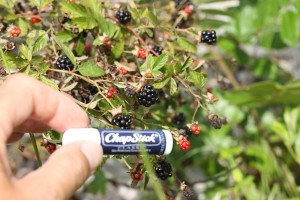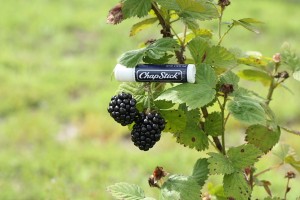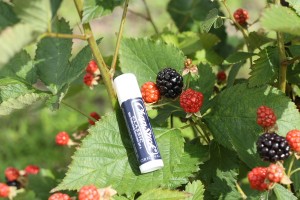Blackberries aren’t my favorite fruit. Don’t get me wrong; I love a bowl of blackberry cobbler as much as the next guy, especially if there’s a scoop of vanilla ice cream melting down through the hot gooey goodness.
But for munching raw, I’d prefer the blueberries that tend to ripen at about the same time here in central Alabama. They taste better, they’re far easier to pick, they don’t have those big seeds that get stuck in your teeth, and they’re not nearly so demanding of my time for maintenance, because they’re just naturally happy in our acid soil. That having been said, every self-respecting diverse orchard in central Alabama needs to have a few blackberries, so we do.
The focus of this article is not about whether one should grow blackberries; it’s about what kind to grow. Let me point out here, as I do repeatedly when I write about issues like this, that I’m not a commercial grower. I don’t need to watch my ROI, I don’t need to maximize production, and I don’t need to satisfy a demanding consumer. I get to decide what to grow based on what I like and like to share, and what I think will make us most resilient in the decades ahead.

These are the wild blackberries seemingly deriving their nutrients from the pile of #4 stone lying between the barn and the lodge. Tiny but succulent, they remain the gold standard for flavor.
So as an adult, when I heard one could now plant thornless blackberries like Navaho, Arapaho. and Natchez, I knew right away they were for me. As Amanda and I sat in our suburban home before moving to the farm, and as I envisioned our orchard, in my mind the blackberries in it were all thornless.

]2 These are the gigantic Kiowa berries. Don’t let the deep black color fool you; neither of these is ready to eat yet – too shiny!
By the time I was actually buying fruit trees for our orchard at Petals from the Past, I had decided that I wanted all of them to be kiowas. But Jason Powell at Petals discouraged me from doing that. “If I were you,” he said, “I’d plant a few of each and see which works better for you.” I took Jason’s advice but almost immediately regretted it. None of my blackberries were what I would call fast-growing in our low-fertility hillside soil, but the kiowas were faster than any of the thornless varieties at reaching the trellis line and setting fruit. And those gigantic berries! So impressive! They didn’t taste as sweet as I had hoped, but I knew fruit from young trees is often less sweet, so I remained confident that my kiowas were the ticket.
My blackberries have been in the ground for nearly three years now, I’m having second thoughts, and I’m grateful for Jason’s advice. My kiowas have continued to produce great big berries, but the berries from the thornless bushes are beginning to compete well, especially those from the erect varieties like Ouachita that don’t need a trellis.
And here’s the catch: kiowa blackberries ripen like most other blackberries, changing from green to white to red to black. But if you pick them when they first turn black, you’re likely to be disappointed because they’ll be sour. If you want them to be sweet (and who doesn’t?), you’ll need to resist picking them until you see the shiny black give way to a dull black.
And even then, every now and then a dull black kiowa blackberry will be too tart. You end up kissing a lot of frogs to get a prince. And even when I get a prince, even when I bite into one of those huge sweet berries, they don’t really taste all that good. It’s not that they’re not sweet; they are. The flavor’s just not as deep as I would like.
Let me digress here and admit that, because of my negligence in bush hogging, we have a few wild blackberries growing here and there. Nothing, none of the cultured blackberries, thorny or thornless, matches our wild blackberries in flavor. Sweet, deep, with just a hint of tangy, the wild blackberries remain the standard for flavor.

]4 Here’s a Ouachita berry. Clearly smaller than the kiowa, but still plenty of fruit. And every berry that’s black is a winner.
I won’t pull the kiowas, but if and when they go down I’ll replace them with thornless varieties. If I were starting my orchard again with present knowledge, I’m not sure I would bother trellising blackberries at all. I might just go with erect varieties and save the cost of trellising. But if I were determined to trellis blackberries, I might consider finding a particularly good specimen growing wild in the woods and take cuttings from it. The trellis (and the elimination of spent floricanes) would make it easier to pick those delicious berries and cut way down on the whining.
Pingback: Podcast #191 – Our Eight-Month Fruit Season « Longleaf Breeze